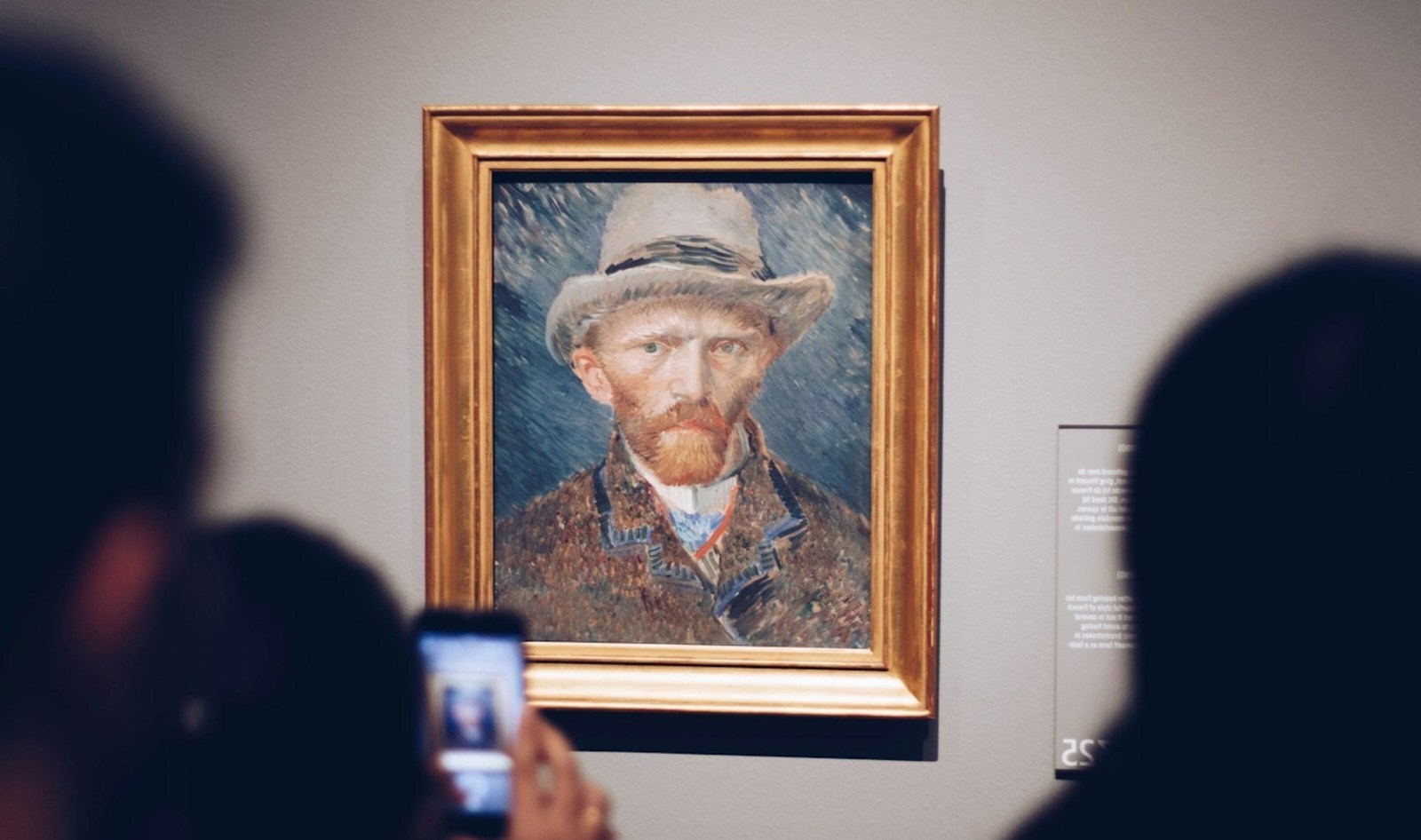
Van Gogh Syndrome is a rare and intriguing condition named after the famous painter Vincent van Gogh, who famously cut off part of his ear. This syndrome involves self-mutilation, often linked to severe mental health issues. Why is it called Van Gogh Syndrome? The name stems from van Gogh's act of self-harm, which has fascinated and puzzled historians and medical professionals alike. Understanding this syndrome requires delving into the complexities of mental health, historical context, and the human psyche. This blog post will explore 40 fascinating facts about Van Gogh Syndrome, shedding light on its causes, symptoms, and the impact it has on those affected. Get ready to learn about a condition as complex and enigmatic as the artist it’s named after.
Key Takeaways:
- Van Gogh Syndrome is a rare condition where individuals feel compelled to amputate their own limbs, often linked to psychological distress and a disconnect between their physical body and mental image of themselves.
- Treatment involves a combination of medical, psychological, and social support, with early intervention being crucial to prevent self-harm and provide appropriate care. Art therapy and family support play important roles in managing the condition.
What is Van Gogh Syndrome?
Van Gogh Syndrome, also known as self-amputation syndrome, is a rare psychological condition where individuals feel compelled to amputate their own limbs. Named after the famous artist Vincent van Gogh, who famously cut off part of his own ear, this syndrome is both fascinating and alarming.
- Van Gogh Syndrome is extremely rare, with only a few documented cases worldwide.
- The syndrome is often linked to Body Integrity Identity Disorder (BIID), where individuals feel a disconnect between their physical body and their mental image of themselves.
- People with Van Gogh Syndrome may experience intense anxiety or depression related to their perceived physical "flaw."
- The condition can lead to dangerous self-harm behaviors, including attempts to amputate limbs or other body parts.
- Van Gogh Syndrome is not officially recognized as a distinct medical diagnosis in the DSM-5, the manual used by mental health professionals.
Historical Cases of Self-Amputation
Throughout history, there have been several notable cases of self-amputation, often linked to severe psychological distress or extreme circumstances.
- Vincent van Gogh is the most famous case, having cut off part of his ear in 1888 during a period of intense mental turmoil.
- In 2001, a Scottish man named David Openshaw amputated his own leg using a homemade guillotine, claiming he felt it didn't belong to him.
- Another case involved a German man who froze his leg in dry ice before having it surgically removed, also citing feelings of bodily alienation.
- Historical records from the 19th century describe a French soldier who amputated his own arm after developing a severe infection, despite medical advice to the contrary.
- In 2008, a man in the United States amputated his own hand with a circular saw, later stating he felt compelled to do so by an overwhelming urge.
Psychological and Medical Perspectives
Understanding Van Gogh Syndrome requires a look into both psychological theories and medical explanations.
- Some psychologists believe the syndrome may be linked to early childhood trauma or neglect.
- Neurologists have suggested that abnormalities in the brain's parietal lobe, which processes sensory information, could play a role.
- The condition is sometimes associated with obsessive-compulsive disorder (OCD), where individuals have uncontrollable, repetitive thoughts and behaviors.
- Cognitive-behavioral therapy (CBT) has been used to treat some cases, focusing on changing harmful thought patterns.
- Medications such as antidepressants or antipsychotics may be prescribed to help manage symptoms.
Treatment and Support
Managing Van Gogh Syndrome involves a combination of medical, psychological, and social support.
- Early intervention is crucial to prevent self-harm and provide appropriate care.
- Support groups can offer a sense of community and understanding for those affected.
- Family therapy may help address underlying issues and improve communication within the family unit.
- Some patients benefit from inpatient treatment programs, where they can receive intensive care and monitoring.
- Ongoing research aims to better understand the condition and develop more effective treatments.
The Role of Art and Expression
Art can play a significant role in both understanding and coping with Van Gogh Syndrome.
- Vincent van Gogh's own artwork often reflects his mental state, offering insight into his struggles.
- Art therapy has been used as a treatment method, allowing individuals to express their feelings in a non-verbal way.
- Creating art can provide a sense of accomplishment and purpose, which may help alleviate some symptoms.
- Viewing and discussing art can foster empathy and understanding among those who may not have the condition.
- Some artists with Van Gogh Syndrome use their work to raise awareness and reduce stigma.
Ethical and Legal Considerations
Van Gogh Syndrome raises important ethical and legal questions, particularly regarding self-harm and medical intervention.
- Medical professionals must balance respecting a patient's autonomy with the need to prevent harm.
- In some cases, individuals may seek illegal or dangerous methods to amputate limbs if denied medical assistance.
- Legal systems vary in how they handle cases of self-amputation, with some countries criminalizing the act.
- Ethical debates continue about whether elective amputation should be allowed for those with BIID.
- Mental health advocacy groups argue for more compassionate and informed approaches to treatment.
The Future of Van Gogh Syndrome Research
Ongoing research is essential to better understand and treat Van Gogh Syndrome.
- Advances in neuroimaging may help identify brain abnormalities linked to the condition.
- Genetic studies could reveal hereditary factors that contribute to the syndrome.
- Longitudinal studies are needed to track the progression of the condition over time.
- Collaborative research efforts between psychologists, neurologists, and other specialists can provide a more comprehensive understanding.
- Increased awareness and funding for research can lead to improved treatment options and support services.
Personal Stories and Experiences
Hearing from those who live with Van Gogh Syndrome can offer valuable insights and foster empathy.
- Many individuals describe a lifelong struggle with feelings of bodily alienation.
- Some have found relief through medical intervention, while others continue to seek answers.
- Personal stories highlight the importance of compassionate care and understanding from medical professionals.
- Sharing experiences can help reduce stigma and encourage others to seek help.
- Each person's journey with Van Gogh Syndrome is unique, underscoring the need for personalized treatment approaches.
Final Thoughts on Van Gogh Syndrome
Van Gogh Syndrome, also known as Münchausen Syndrome, is a complex and often misunderstood condition. People with this syndrome fabricate illnesses or injuries to gain attention or sympathy. Named after the famous artist Vincent van Gogh, who allegedly cut off his own ear, this syndrome highlights the extreme lengths some individuals go to for emotional support. Understanding the signs and symptoms can help in identifying and providing the necessary support for those affected. Early intervention and therapy are crucial in managing the condition and improving the quality of life for sufferers. If you or someone you know exhibits signs of Van Gogh Syndrome, seeking professional help is essential. Awareness and empathy can make a significant difference in the lives of those struggling with this challenging disorder.
Frequently Asked Questions
Was this page helpful?
Our commitment to delivering trustworthy and engaging content is at the heart of what we do. Each fact on our site is contributed by real users like you, bringing a wealth of diverse insights and information. To ensure the highest standards of accuracy and reliability, our dedicated editors meticulously review each submission. This process guarantees that the facts we share are not only fascinating but also credible. Trust in our commitment to quality and authenticity as you explore and learn with us.


